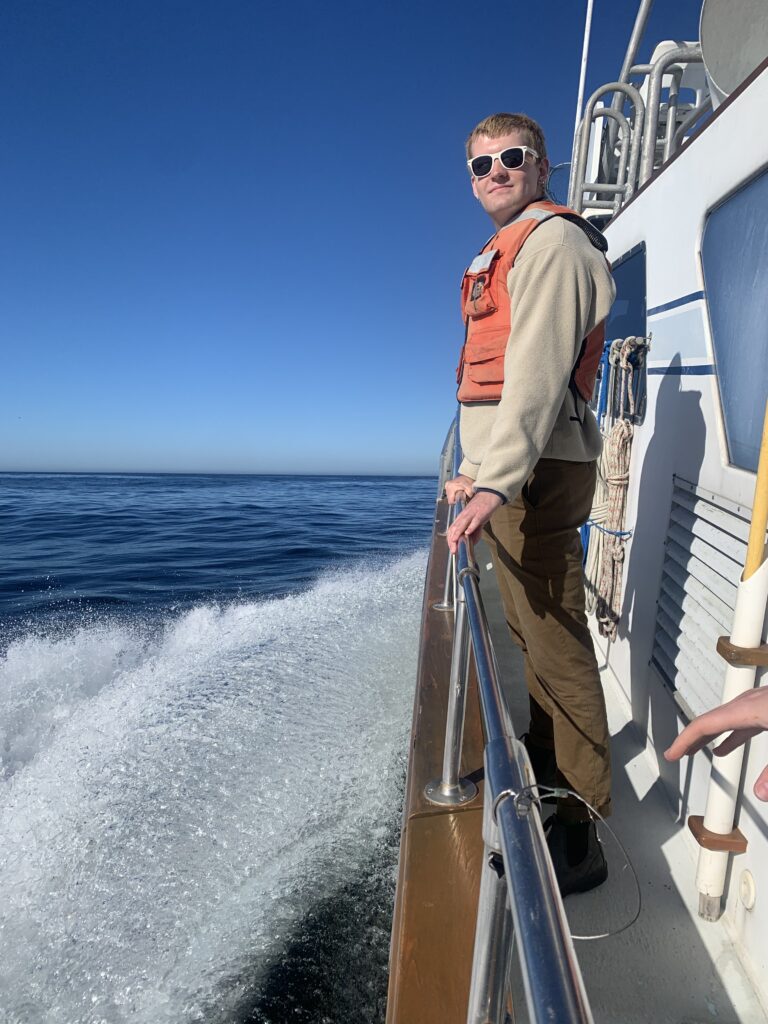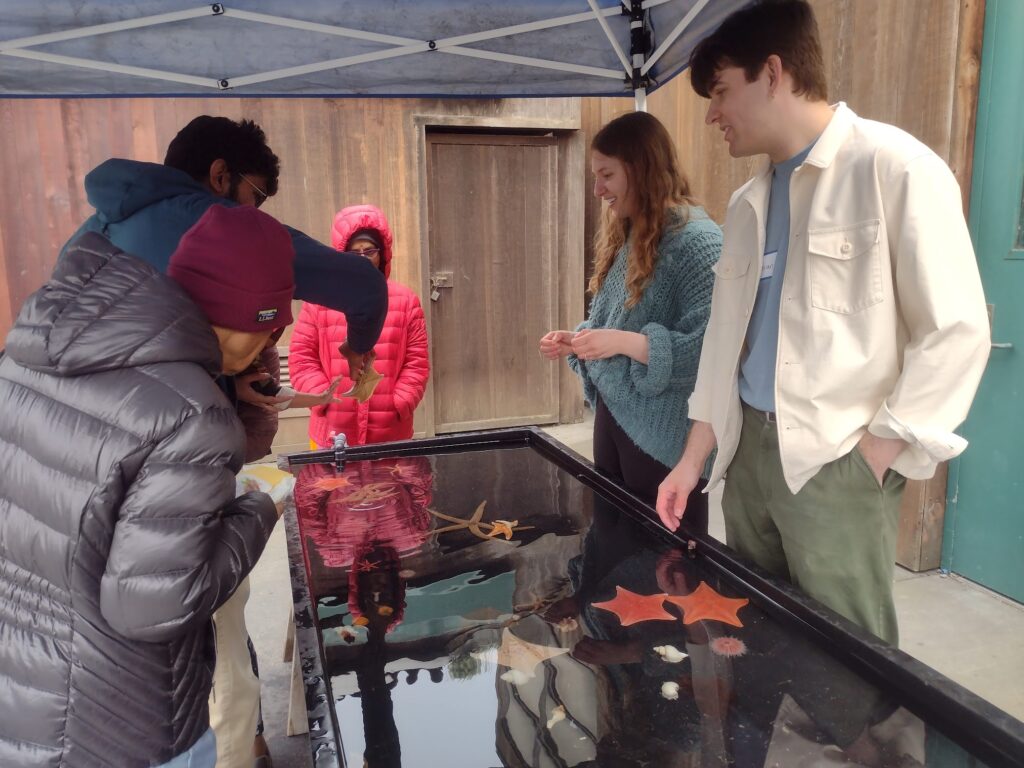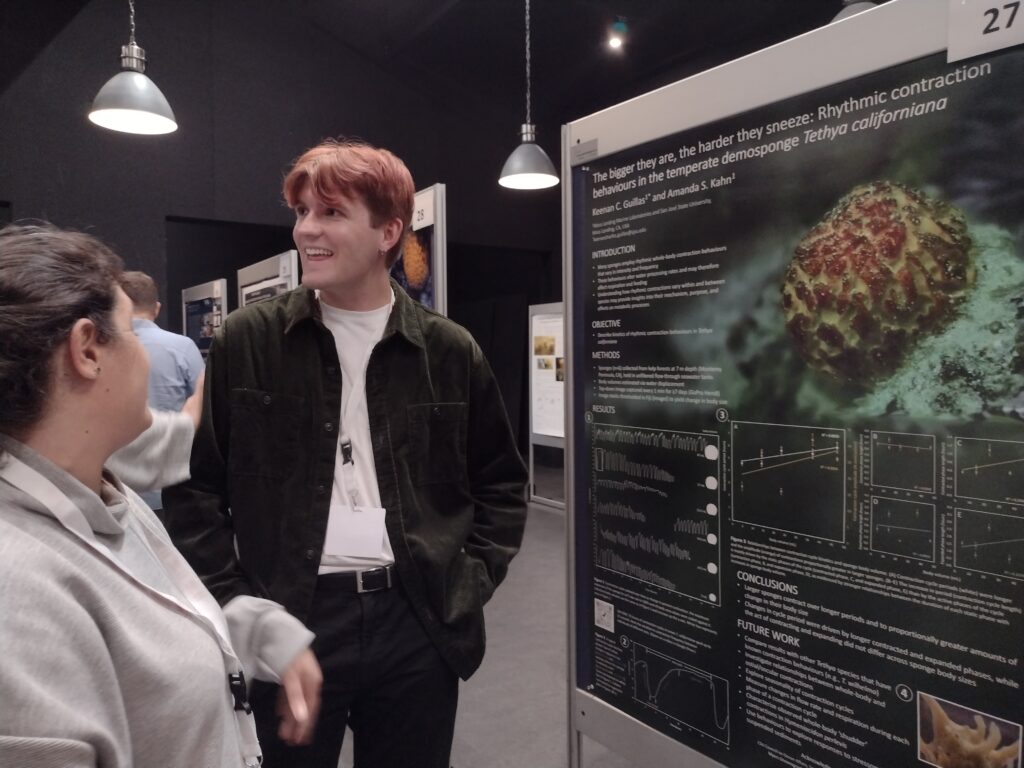"DRIVERS OF RHYTHMIC CONTRACTIONS IN THE TEMPERATE DEMOSPONGES TETHYA CALIFORNIANA AND HYMENIACIDON PERLEVIS"
A Thesis Defense by Keenan C. Guillas
Live-Stream | May 1st, 2025 at 2:00 pm PDT

Abstract
Sponges (Phylum Porifera) are suspension feeders whose water filtration is important to benthic ecosystems because of their conversion of large amounts of dissolved carbon and nitrogen into particulate waste available for detritivores. Sponges filter water by drawing it through a complex aquiferous system of canals and pores. Rhythmic contractions of tissue, which temporarily constrict canals and reduce body size, can diminish filtration rates and therefore affect ecosystem services; however, the physiological function of rhythmic contractions is not completely understood. I recorded long-term time-lapses of the demosponges Tethya californiana and Hymeniacidon perlevis to determine the endogenous and environmental factors that influence rhythmic contractions. I found that contractions occurred simultaneously in the osculum, ostia, and whole body in T. californiana. In H. perlevis, contractions originated and spread between many different oscula, with no evidence of cohesive whole-body behaviour. In T. californiana, duration of rhythmic contractions were significantly correlated with body size, oceanographic season, and dissolved oxygen. Both species reduced contraction frequency and increased total time expanded in seawater enriched with Rhodomonas sp. microalgae. This thesis provides support for rhythmic contractions in sponges as products of both endogenous and environmental factors, improving our understanding of the complexity of behaviours in early-diverging aneural metazoans.
Bio
Keenan earned his BSc in 2018 from the University of Alberta, where he worked with Dr. Sally Leys investigating the ecology of glass sponge reefs in Hecate Strait, British Columbia. At MLML his research focused on drivers of rhythmic contraction behaviours in the marine demosponges Tethya californiana and Hymeniacidon perlevis. He used time-lapse photography and microscopy to improve our understanding of sponge coordination, behaviour, and resilience. He was also student body vice president and an active member of the MLML community. He is now a research technician in the Marine Structural Biology unit at Okinawa Institute of Science and Technology in Japan. He is also a coffee enthusiast and a fiction writer.



